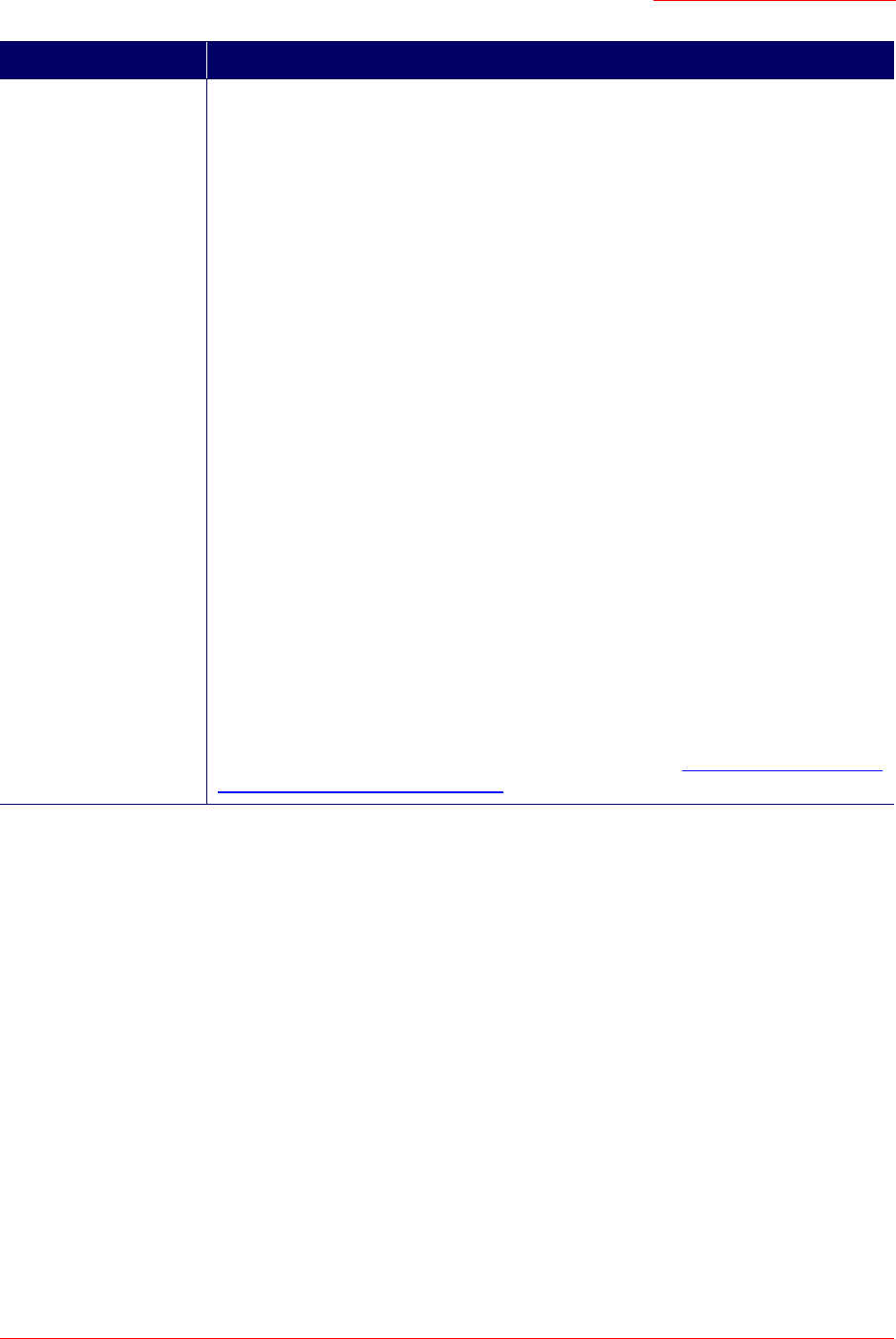Technical data
Table Of Contents
- Professional Access Point Administrator Guide
- Contents
- About This Document
- Getting Started
- Web User Interface
- Basic Settings
- Navigating to Basic Settings
- Review / Describe the Access Point
- Provide Administrator Password and Wireless Network Name
- Set Configuration Policy for New Access Points
- Update Basic Settings
- Summary of Settings
- Basic Settings for a Standalone Access Point
- Your Network at a Glance: Understanding Indicator Icons
- Cluster
- Status
- Advanced
- Basic Settings
- Command Line Interface
- Troubleshooting
- Regulatory Information
- U.S. Robotics Corporation Two (2) Year Limited Warranty
- Glossary
- Index

Professional Access Point
Administrator Guide
Class Structure, Commands, and Examples - 185
Command Description
get The "get" command allows you to get the field values of existing instances of a class.
Classes can be "named" or "unnamed". The command syntax is:
get unnamed-class [ field ... | detail ]
get named-class [ instance | all [ field ... | name | detail ] ]
The rest of the command line is optional. If provided, it is either a list of one or more
fields
, or the keyword detail.
An example of using the "get" command on an unnamed class with a single instance is:
get log
(There is only one log on the access point. This command returns information on the log
file.)
An example of using the "get" command on an unnamed class with multiple instances is:
get log-entry
(There are multiple log entries but they are not named. This command returns all log
entries.)
An example of using the "get" command on a named class with multiple instances is:
get bss wlan0bssInternal
(There are multiple bss’s and they are named. This command returns information on the
BSS named "wlan0bssInternal".)
An example of using the "get" command on a named class to get all instances:
get radius-user all name
get radius-user all
Note: "
wlan0bssInternal
" is the name of the basic service set (BSS) on the internal
network (
wlan0
interface). For information on interfaces, see “Understanding Interfaces
as Presented in the CLI” on page 190.










